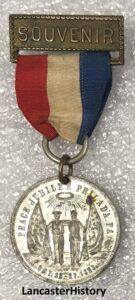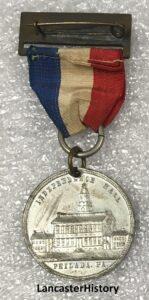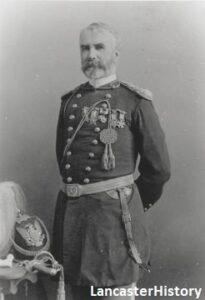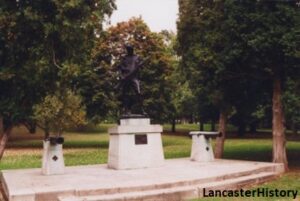The Spanish-American War and the Philadelphia Peace Jubilee of 1898
“A Splendid Little War”
This year marks the 125th anniversary of the Spanish-American War. Described as a “splendid little war” by future Secretary of State John Hay, the war lasted only a few months. The defeat of Spain ended Spanish colonial rule in the Americas and resulted in the United States acquiring territories in the western Pacific and Latin America. Although tensions between the United States and Spain over support for Cuban independence had been brewing for some time, the sinking of the USS Maine in Havana harbor on February 15, 1898 as a result of an explosion of unknown origin resulted in the United States declaring war on Spain on April 25.
The first battle of the war was fought on May 1 in Manila Bay where Commodore George Dewey’s fleet defeated the Spanish naval forces defending the Philippines. In June, American forces landed in Cuba, defeating the Spanish at the Battle of San Juan Heights on July 1 and destroying the Spanish Caribbean fleet at Santiago harbor on July 3. Although these defeats essentially ended the war, a cease fire was not signed until August 12. The war officially ended four months later, when the U.S. and Spanish governments signed the Treaty of Paris on December 10. The U.S. Senate ratified the treaty on February 6, 1899, by a margin of only one vote.
Recovered from the Spanish Cruiser Cristobal Colon
The LancasterHistory object collection contains a number of interesting objects related to the Spanish-American War, including an hourglass taken from the Cristobal Colon, a Spanish ship sunk by the U.S. Navy at the Battle of Santiago Bay. Launched in September 1896 and considered to be one of the best ships in the Spanish fleet, the armored cruiser was not able to outrun American ships and was scuttled in a rocky area by the captain. An American salvage crew boarded the ship and decided to tow it from the rocks, but the ship capsized and sank.
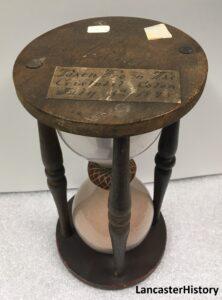
Philadelphia Peace Jubilee
Philadelphia hosted a peace jubilee in October 1898 to celebrate the end of the Spanish-American War and to honor the soldiers and sailors who fought in it.
The first peace jubilee in the United States occurred in Boston on June 16-19, 1869. Known as the National Peace Jubilee, the event celebrated the end of the Civil War and the return of peace. Organized by bandleader Patrick S. Gilmore (author of “When Johnny Comes Marching Home” under the pseudonym Louis Lambert in 1863) the event featured speeches and musical performances, including a thousand-piece orchestra. The event was so successful that Gilmore planned a second even larger event to celebrate the end of the Franco-Prussian War. The World’s Peace Jubilee opened on June 17, 1872 in Boston and ran for eighteen days.
Much like the original National Peace Jubilee, the Philadelphia Peace Jubilee celebrated the end of war and the return of peace. Held between October 25th and 27th – exactly 125 years ago this month – the event also brought national attention to the city of Philadelphia. Activities for the festival included speeches and three parades – a naval parade featuring nine warships, a military parade featuring an estimated 25,000 troops reviewed by President McKinley, and a civic parade – and of course, souvenirs! Peace jubilees continued to be held over the following months, including jubilees in Chicago and Atlanta also attended by President McKinley.
The front of this souvenir medallion and ribbon features a center image of a shoulder-embracing sailor and soldier each holding a flag and surrounded by the name and dates of the celebration. The back of the medallion features an image of Independence Hall.
The Hiker
While Lancaster did not host a peace jubilee celebration in 1898, the General William S. McCaskey Camp, United Spanish War Veterans of Lancaster, did erect a memorial to those who served. Located in Buchanan Park, the memorial was dedicated on July 4, 1913, the fifteenth anniversary of the war. The plaque on the monument was cast from metal recovered from the USS Maine. The United States Navy donated the accompanying cannons. The statue of a soldier holding a rifle was added in 1931. The official name of the statue is “The Hiker.” American soldiers in the war often referred to themselves as Hikers, much like soldiers in World War I referred to themselves as doughboys and in World War II as G.I. Joes.
New York sculptor Allen G. Newman crafted the original statue in 1904. It has been reproduced several times as a standalone statue or as a memorial to those who fought in the Spanish-American War.
From Object Lessons

